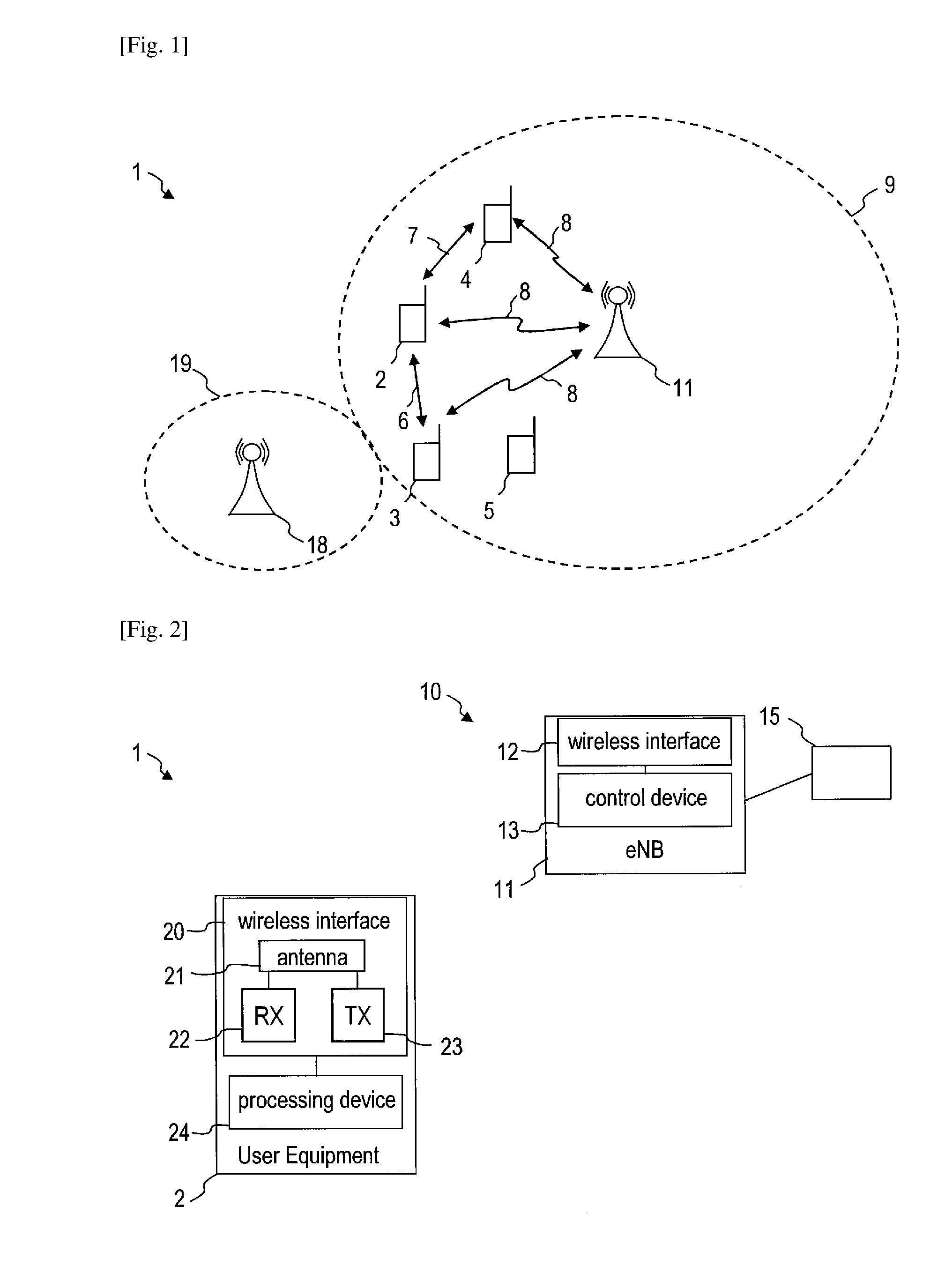Method for device-to-device resource allocation, user equipment and base station
a resource allocation and user equipment technology, applied in the field of mobile communication systems, can solve the problems of difficult control of the allocation of resources by the mobile communication network, and achieve the effect of keeping the overhead of traffic load small
- Summary
- Abstract
- Description
- Claims
- Application Information
AI Technical Summary
Benefits of technology
Problems solved by technology
Method used
Image
Examples
Embodiment Construction
[0069]In the following, exemplary embodiments of the invention will be described in more detail. It has to be understood that the features of the various exemplary embodiments described herein may be combined with each other unless specifically noted otherwise. Identical or similar reference numerals refer to identical or similar components.
[0070]While exemplary embodiments will be described with reference to certain use cases for device-to-device (D2D) communication, it is to be understood that the techniques for D2D discovery and D2D communication may be used for a wide variety of use cases, including public safety use cases and other commercial use cases. While exemplary embodiments will be described in the context of certain cellular mobile communication networks, e.g. Long Term Evolution (LTE) networks, the embodiments are not described to such mobile communication techniques.
[0071]While exemplary embodiments will be described with reference to a base station which transmits in...
PUM
 Login to View More
Login to View More Abstract
Description
Claims
Application Information
 Login to View More
Login to View More - R&D
- Intellectual Property
- Life Sciences
- Materials
- Tech Scout
- Unparalleled Data Quality
- Higher Quality Content
- 60% Fewer Hallucinations
Browse by: Latest US Patents, China's latest patents, Technical Efficacy Thesaurus, Application Domain, Technology Topic, Popular Technical Reports.
© 2025 PatSnap. All rights reserved.Legal|Privacy policy|Modern Slavery Act Transparency Statement|Sitemap|About US| Contact US: help@patsnap.com



